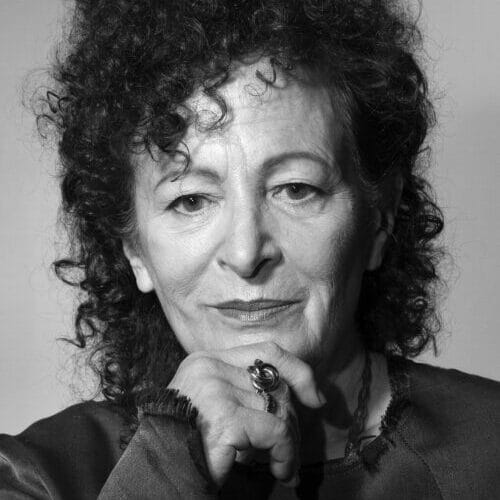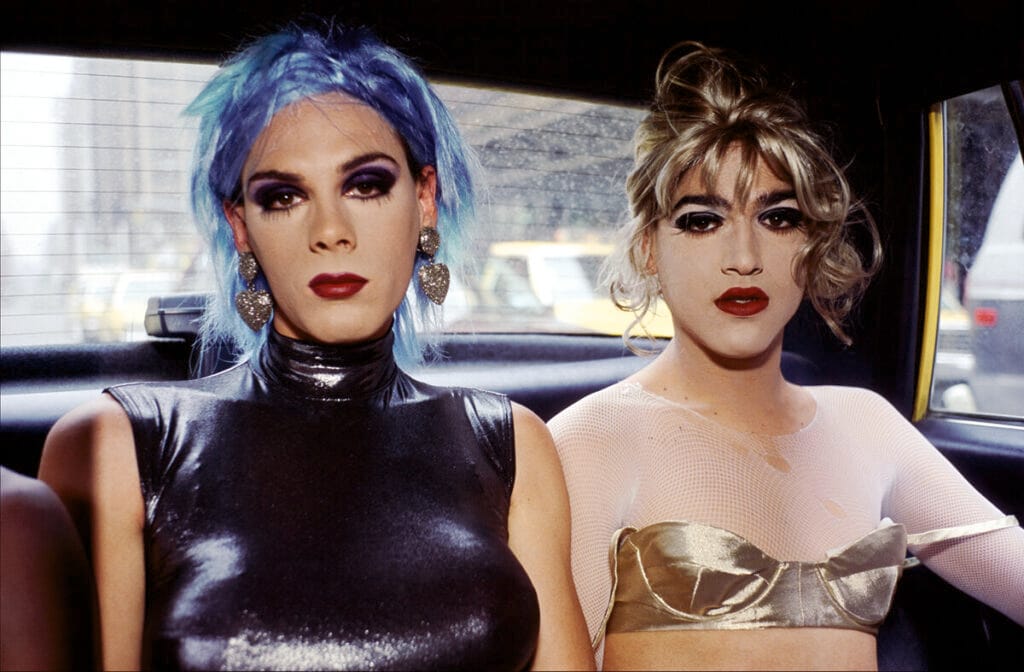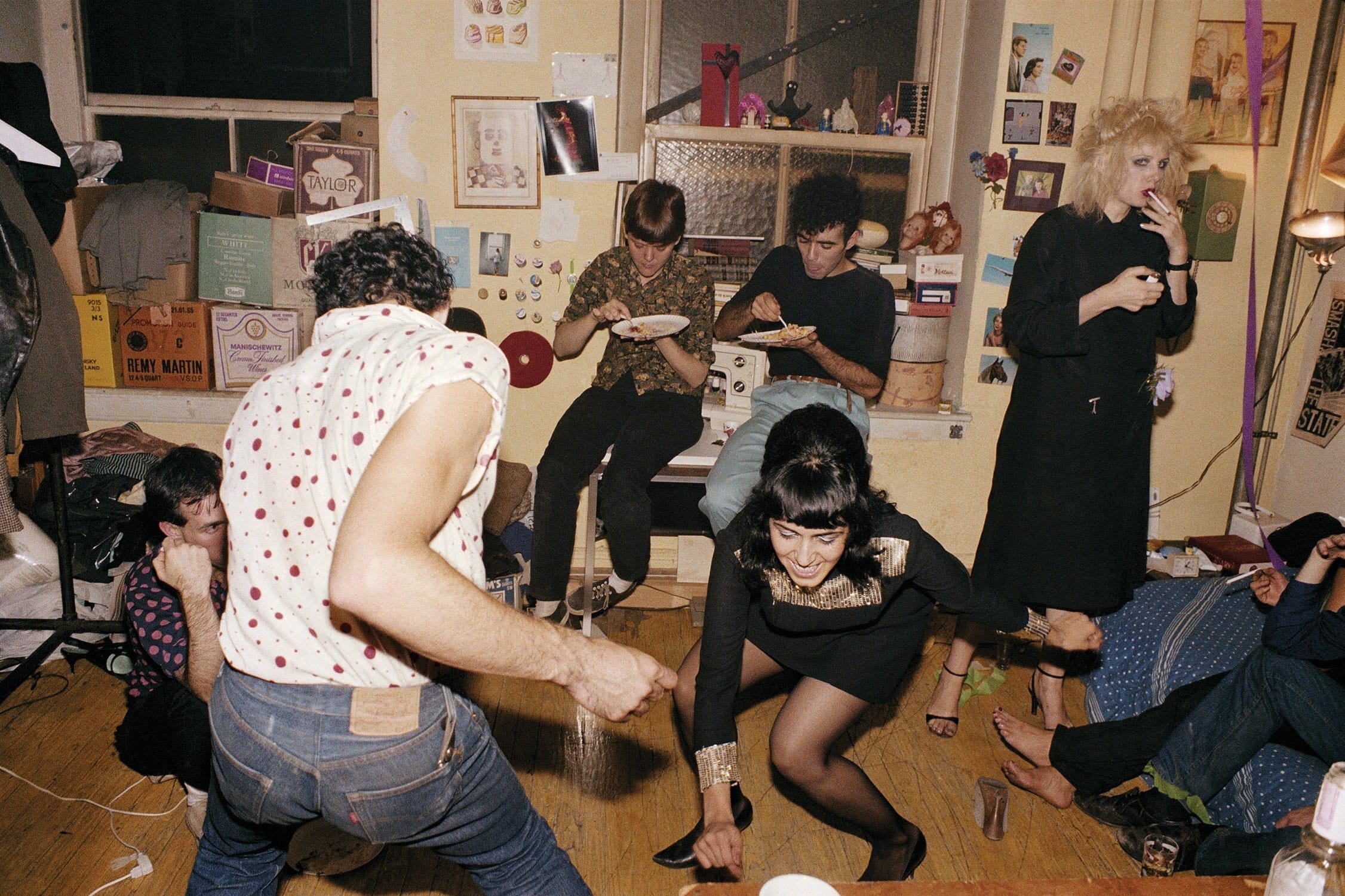Nan Goldin’s oeuvre stands as an indelible testament to the transformative power of photography. Through her lens, she encapsulates the raw, unvarnished essence of life on the fringes of society, creating a visual lexicon that speaks volumes about identity, desire, and the human condition. Goldin’s photographic practice is a complex interplay of technique, subject matter, and a distinctive aesthetic that challenges conventional notions of beauty and normalcy. Her work delves into the intimate realms of LGBT subcultures, visual quirkiness, and kinkiness, all while maintaining an overarching sense of aesthetism that elevates her subjects to the realm of art. This article endeavors to dissect the myriad layers of Goldin’s artistry, offering a comprehensive analysis of her technical prowess, thematic depth, and unparalleled talent.

The Technical Alchemy of Nan Goldin
Nan Goldin’s technical approach to photography is marked by a visceral immediacy and an unwavering commitment to authenticity. Eschewing traditional studio setups and artificial lighting, Goldin opts for natural light and spontaneous compositions, imbuing her images with a sense of intimacy and spontaneity. This methodology is reflective of her background in the snapshot aesthetic, a style that prioritizes candidness and personal connection over polished perfection.
Goldin’s use of color is particularly noteworthy. Her images often feature rich, saturated hues that enhance the emotional intensity of her subjects. This chromatic vibrancy is achieved through a combination of film stock selection, exposure techniques, and meticulous post-processing. The result is a visual palette that is both arresting and evocative, drawing viewers into the emotional landscape of her photographs.
Moreover, Goldin’s adeptness at framing and composition cannot be overstated. Her images frequently employ unconventional angles and perspectives, creating a sense of disorientation and immediacy. This deliberate departure from traditional compositional rules serves to underscore the unconventional lives of her subjects, reinforcing the thematic content of her work through formal means.

The Marginalized Muse: LGBT Subcultures and Goldin’s Empathic Eye
At the heart of Goldin’s photography lies an unwavering dedication to documenting the lives of LGBT individuals and subcultures. Her seminal work, “The Ballad of Sexual Dependency,” is a poignant chronicle of her friends and lovers, many of whom were part of the LGBT community. Through her lens, Goldin captures the joy, pain, and complexity of queer existence, offering a nuanced portrayal that transcends stereotypes and caricatures.
Goldin’s empathetic approach to her subjects is evident in the deeply personal nature of her photographs. She does not merely document her subjects from a distance; rather, she becomes an integral part of their world, forging intimate connections that are palpable in her images. This immersive methodology allows Goldin to capture moments of vulnerability and tenderness that might otherwise go unseen, offering a rare glimpse into the inner lives of her subjects.
In her portrayal of LGBT subcultures, Goldin challenges societal norms and prejudices, presenting her subjects as fully realized individuals rather than mere representations of their identities. This humanizing perspective is particularly evident in her portraits, which often feature her subjects in moments of introspection or quietude. Through these images, Goldin affirms the dignity and humanity of her subjects, asserting their rightful place in the broader tapestry of society.




The Visual Quirkiness and Kinkiness of Goldin’s Aesthetic
Goldin’s aesthetic is characterized by a distinctive visual quirkiness and kinkiness that sets her work apart from conventional photographic norms. Her images often feature elements of the bizarre and the uncanny, creating a sense of dissonance that challenges viewers to reconsider their preconceived notions of beauty and propriety.
This visual eccentricity is evident in Goldin’s choice of subject matter, which frequently includes unconventional bodies, androgynous figures, and scenes of sexual exploration. Her portrayal of kink and fetish is particularly striking, as she approaches these themes with a nonjudgmental eye, presenting them as natural expressions of human desire. In doing so, Goldin destigmatizes alternative sexualities and practices, offering a more inclusive and expansive view of human intimacy.
Goldin’s knack for capturing the ephemeral and the fleeting is another hallmark of her quirky aesthetic. Her images often feature motion blur, off-kilter angles, and spontaneous compositions that convey a sense of immediacy and dynamism. This technique not only enhances the emotional impact of her photographs but also mirrors the transient nature of the moments she captures, imbuing her work with a poignant sense of temporality.

Aesthetism and the Elevation of the Ordinary
Despite the raw and often gritty subject matter of her work, Goldin’s photographs possess a remarkable sense of aesthetism that elevates the ordinary to the realm of the sublime. Her keen eye for detail and composition transforms everyday scenes into visually arresting tableaux, revealing the inherent beauty in the mundane.
Goldin’s use of light and shadow plays a crucial role in this aesthetic elevation. Her images often feature dramatic lighting contrasts that create a sense of depth and dimensionality, drawing viewers into the scene. This interplay of light and dark not only enhances the visual impact of her photographs but also imbues them with a cinematic quality, evoking the dramatic tension and emotional intensity of a film still.
Furthermore, Goldin’s ability to capture the emotional essence of her subjects contributes to the aesthetic power of her work. Her images are suffused with a palpable sense of feeling, whether it be the tender intimacy of a lover’s embrace or the haunting melancholy of a solitary figure. This emotional resonance elevates her photographs beyond mere visual documentation, transforming them into profound meditations on the human experience.

The Talent of Nan Goldin: An Intellectual and Poetic Appraisal
Nan Goldin’s talent as a photographer is multifaceted, encompassing technical mastery, thematic depth, and an unparalleled ability to convey the human condition through visual means. Her work is a testament to the power of photography as a medium of expression, capable of capturing the ineffable and the ephemeral in ways that words often cannot.
At the core of Goldin’s talent is her unwavering commitment to authenticity and empathy. Her photographs are deeply personal and unapologetically honest, offering an unfiltered view of her subjects’ lives. This authenticity is not merely a stylistic choice but a fundamental aspect of her artistic philosophy, rooted in her belief in the transformative power of vulnerability and truth.
Goldin’s thematic exploration of identity, desire, and marginalization is another key aspect of her talent. Her work delves into the complexities of human existence, offering a nuanced and multifaceted portrayal of her subjects. Through her lens, Goldin examines the fluidity of identity, the intricacies of desire, and the impact of societal marginalization, creating a body of work that is both intellectually and emotionally resonant.
Moreover, Goldin’s ability to infuse her photographs with a sense of poetry and lyricism sets her work apart. Her images are not merely visual records but poetic meditations on the human experience, imbued with a sense of narrative and emotion. This poetic quality is evident in her use of color, light, and composition, which together create a visual language that is both evocative and profound.

The Art Substance and Themes of Nan Goldin
The substance of Goldin’s art lies in its ability to convey the complexity and depth of human experience through visual means. Her work is a rich tapestry of themes and motifs, each contributing to a broader exploration of identity, desire, and the human condition.
One of the central themes in Goldin’s work is the exploration of identity and selfhood. Her photographs often feature individuals in moments of introspection or transformation, capturing the fluidity and multiplicity of identity. This exploration is particularly evident in her portrayal of LGBT subcultures, where Goldin delves into the nuances of gender and sexual identity, offering a nuanced and empathetic portrayal of her subjects.
Desire is another recurrent theme in Goldin’s work. Her images often depict scenes of intimacy and eroticism, exploring the myriad ways in which desire manifests in human relationships. Goldin’s portrayal of desire is unapologetically raw and honest, eschewing conventional notions of propriety in favor of a more authentic and inclusive depiction of human sexuality.
Marginalization and societal exclusion are also prominent themes in Goldin’s work. Her photographs frequently feature individuals and communities on the fringes of society, offering a poignant commentary on the impact of societal norms and prejudices. Through her empathetic lens, Goldin challenges viewers to reconsider their preconceptions and biases, fostering a greater understanding and acceptance of marginalized identities.

The Poetic Visual Language of Nan Goldin
Goldin’s photographs are imbued with a poetic visual language that transcends mere documentation, transforming her images into profound meditations on the human condition. This poetic sensibility is evident in her use of color, light, and composition, which together create a visual lexicon that is both evocative and deeply resonant.
Color plays a crucial role in Goldin’s visual language. Her images often feature rich, saturated hues that enhance the emotional intensity of her subjects. This chromatic vibrancy is achieved through a combination of film stock selection, exposure techniques, and meticulous post-processing. The result is a visual palette that is both arresting and evocative, drawing viewers into the emotional landscape of her photographs.
Light and shadow are also integral components of Goldin’s visual language. Her images often feature dramatic lighting contrasts that create a sense of depth and dimensionality, drawing viewers into the scene. This interplay of light and dark not only enhances the visual impact of her photographs but also imbues them with a cinematic quality, evoking the dramatic tension and emotional intensity of a film still.
Composition is another key element of Goldin’s poetic visual language. Her images frequently employ unconventional angles and perspectives, creating a sense of disorientation and immediacy. This deliberate departure from traditional compositional rules serves to underscore the unconventional lives of her subjects, reinforcing the thematic content of her work through formal means.

The Emotional Resonance of Nan Goldin’s Photographs
Goldin’s ability to capture the emotional essence of her subjects is a defining characteristic of her work. Her photographs are suffused with a palpable sense of feeling, whether it be the tender intimacy of a lover’s embrace or the haunting melancholy of a solitary figure. This emotional resonance elevates her photographs beyond mere visual documentation, transforming them into profound meditations on the human experience.
Goldin’s empathetic approach to her subjects is a key factor in the emotional impact of her work. She does not merely document her subjects from a distance; rather, she becomes an integral part of their world, forging intimate connections that are palpable in her images. This immersive methodology allows Goldin to capture moments of vulnerability and tenderness that might otherwise go unseen, offering a rare glimpse into the inner lives of her subjects.
Furthermore, Goldin’s ability to convey the complexity and depth of human emotions through visual means is a testament to her talent as a photographer. Her images often depict scenes of intimacy and eroticism, exploring the myriad ways in which desire manifests in human relationships. Goldin’s portrayal of desire is unapologetically raw and honest, eschewing conventional notions of propriety in favor of a more authentic and inclusive depiction of human sexuality.

The Intellectual Depth of Nan Goldin’s Work
Goldin’s work is not only emotionally resonant but also intellectually profound, offering a nuanced and multifaceted exploration of identity, desire, and the human condition. Her photographs are rich in thematic content, delving into the complexities of human existence and challenging viewers to reconsider their preconceptions and biases.
One of the central themes in Goldin’s work is the exploration of identity and selfhood. Her photographs often feature individuals in moments of introspection or transformation, capturing the fluidity and multiplicity of identity. This exploration is particularly evident in her portrayal of LGBT subcultures, where Goldin delves into the nuances of gender and sexual identity, offering a nuanced and empathetic portrayal of her subjects.
Desire is another recurrent theme in Goldin’s work. Her images often depict scenes of intimacy and eroticism, exploring the myriad ways in which desire manifests in human relationships. Goldin’s portrayal of desire is unapologetically raw and honest, eschewing conventional notions of propriety in favor of a more authentic and inclusive depiction of human sexuality.
Marginalization and societal exclusion are also prominent themes in Goldin’s work. Her photographs frequently feature individuals and communities on the fringes of society, offering a poignant commentary on the impact of societal norms and prejudices. Through her empathetic lens, Goldin challenges viewers to reconsider their preconceptions and biases, fostering a greater understanding and acceptance of marginalized identities.

The Cinematic Quality of Nan Goldin’s Photography
Goldin’s photographs are often imbued with a cinematic quality that enhances their visual impact and emotional resonance. This cinematic sensibility is evident in her use of light, composition, and narrative, which together create a visual language that is both evocative and deeply resonant.
Goldin’s use of light and shadow is a key element of her cinematic aesthetic. Her images often feature dramatic lighting contrasts that create a sense of depth and dimensionality, drawing viewers into the scene. This interplay of light and dark not only enhances the visual impact of her photographs but also imbues them with a cinematic quality, evoking the dramatic tension and emotional intensity of a film still.
Composition is another crucial component of Goldin’s cinematic aesthetic. Her images frequently employ unconventional angles and perspectives, creating a sense of disorientation and immediacy. This deliberate departure from traditional compositional rules serves to underscore the unconventional lives of her subjects, reinforcing the thematic content of her work through formal means.
Narrative is also an integral aspect of Goldin’s cinematic aesthetic. Her photographs often tell a story, capturing moments of intimacy, vulnerability, and transformation. This narrative quality is enhanced by Goldin’s empathetic approach to her subjects, which allows her to capture the emotional essence of their experiences. Through her lens, Goldin creates a visual narrative that is both evocative and deeply resonant, offering a nuanced and multifaceted exploration of the human condition.
The Subversive Power of Nan Goldin’s Photography
Goldin’s work is marked by a subversive sensibility that challenges conventional notions of beauty, propriety, and normalcy. Her images often feature elements of the bizarre and the uncanny, creating a sense of dissonance that forces viewers to reconsider their preconceived notions of the world.
This subversive sensibility is evident in Goldin’s choice of subject matter, which frequently includes unconventional bodies, androgynous figures, and scenes of sexual exploration. Her portrayal of kink and fetish is particularly striking, as she approaches these themes with a nonjudgmental eye, presenting them as natural expressions of human desire. In doing so, Goldin destigmatizes alternative sexualities and practices, offering a more inclusive and expansive view of human intimacy.
Goldin’s subversive approach is also evident in her depiction of marginalization and societal exclusion. Her photographs frequently feature individuals and communities on the fringes of society, offering a poignant commentary on the impact of societal norms and prejudices. Through her empathetic lens, Goldin challenges viewers to reconsider their preconceptions and biases, fostering a greater understanding and acceptance of marginalized identities.

The Transformative Power of Vulnerability in Goldin’s Work
At the core of Goldin’s artistic philosophy is a belief in the transformative power of vulnerability. Her photographs are deeply personal and unapologetically honest, offering an unfiltered view of her subjects’ lives. This authenticity is not merely a stylistic choice but a fundamental aspect of her artistic philosophy, rooted in her belief in the transformative power of vulnerability and truth.
Goldin’s empathetic approach to her subjects is a key factor in the emotional impact of her work. She does not merely document her subjects from a distance; rather, she becomes an integral part of their world, forging intimate connections that are palpable in her images. This immersive methodology allows Goldin to capture moments of vulnerability and tenderness that might otherwise go unseen, offering a rare glimpse into the inner lives of her subjects.
Furthermore, Goldin’s ability to convey the complexity and depth of human emotions through visual means is a testament to her talent as a photographer. Her images often depict scenes of intimacy and eroticism, exploring the myriad ways in which desire manifests in human relationships. Goldin’s portrayal of desire is unapologetically raw and honest, eschewing conventional notions of propriety in favor of a more authentic and inclusive depiction of human sexuality.
The Enduring Legacy of Nan Goldin
Nan Goldin’s photography is a powerful and enduring testament to the transformative power of art. Through her lens, she captures the raw, unvarnished essence of life, offering a nuanced and empathetic portrayal of her subjects. Her technical prowess, thematic depth, and poetic sensibility set her work apart, creating a body of art that is both intellectually and emotionally resonant.
Goldin’s exploration of identity, desire, and marginalization challenges conventional notions of beauty and normalcy, offering a more inclusive and expansive view of the human experience. Her work serves as a powerful reminder of the importance of authenticity and empathy in art, affirming the dignity and humanity of all individuals.
In the annals of photographic history, Nan Goldin’s work stands as a beacon of innovation and artistry, a testament to the enduring power of the human spirit captured through the lens. Her legacy is not only a celebration of her talent but also a profound meditation on the complexities of the human condition, offering a glimpse into the beauty and poignancy of life in all its myriad forms.






